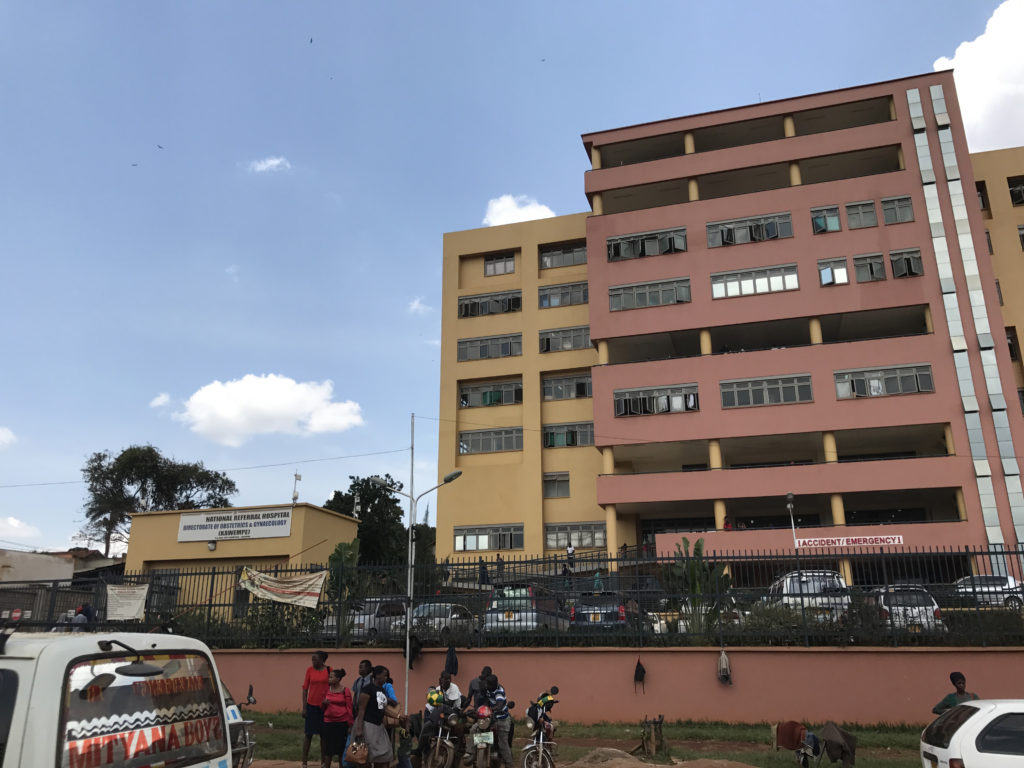Last week, Save the Mothers’ new batch of first-year international students made a visit to Uganda’s large national referral hospital for a small dose of the reality of the Ugandan health care system. Program Intern Marissa Ware went along, and blogs about the experience below.
The bus pulled up to the gates of the hospital to be greeted by many women milling about outside. The hospital is a beautiful, eight floor cement building painted in shades of yellow and muted red, standing in stark contrast not only to the buildings surrounding it, but also to what lies inside the walls. The hospital treats severe gynecologic and obstetric cases, which are referred from the country’s lower level health centres, ranging from gynecologic cancers to pre-term neonates to high-risk expecting mothers.
Dr. Eve Nakabembe guided us on a tour of the facility, explaining a bit of what happens on each floor. Many issues were readily apparent—severely overcrowded waiting rooms and exam areas, a shortage and disorganization of medical staff, lack of basic medical supplies such as gloves and sutures, and haphazard hygiene and sanitation. On the first floor, a doctor explained different methods of family planning to a large group of 30 women who had recently given birth. The group was seated on benches, looks of confusion and fear on their faces, as the doctor mostly yelled the information over the 15 to 20 student doctors and support staff chatting, and entering and exiting the waiting area. As we climbed the winding ramp to the third floor, home to labor and delivery, I fought back waves of disbelief, shock, and an overwhelming sense of hopelessness.
Women and the few husbands allowed to enter (due to severe overcrowding), sat outside the ward along the walls on the floor. We entered the ward, to see 20 expecting mothers seated on benches waiting to be seen, while women in distress occupied the patient beds, the floor spaces between beds, and huddled in groups of six on the floor along the walls—anywhere a small amount of space permitted. While Dr. Eve provided insight on some of the more visible issues prevalent in the hospital, such as overcrowding, lack of privacy and gloves, she was interrupted by the cry of a woman who could no longer wait to be seen by a physician, giving birth on a small square of plastic on the floor.
The North American in me fought to keep a neutral face as student doctors attended to the woman, with no apparent sense of urgency; this was only normal for them. Dr. Eve used the experience to highlight the invisible issues of the hospital—including but not limited to accountability, logistics, and management. She asked the students to think critically about those issues utilizing the lenses of their respective professions—whether journalist, social worker, physician, or solider. The issues occurring in the hospital were not due to a lack of medical expertise, but because of a gap in supporting public health roles that ensure a hospital will function smoothly.
As I looked around, I saw that the students were appalled at the conditions, but also curious and hungry to find solutions to these issues. The experience may have been intended as a dose of reality for the students, but it ended up being a dose of inspiration.

